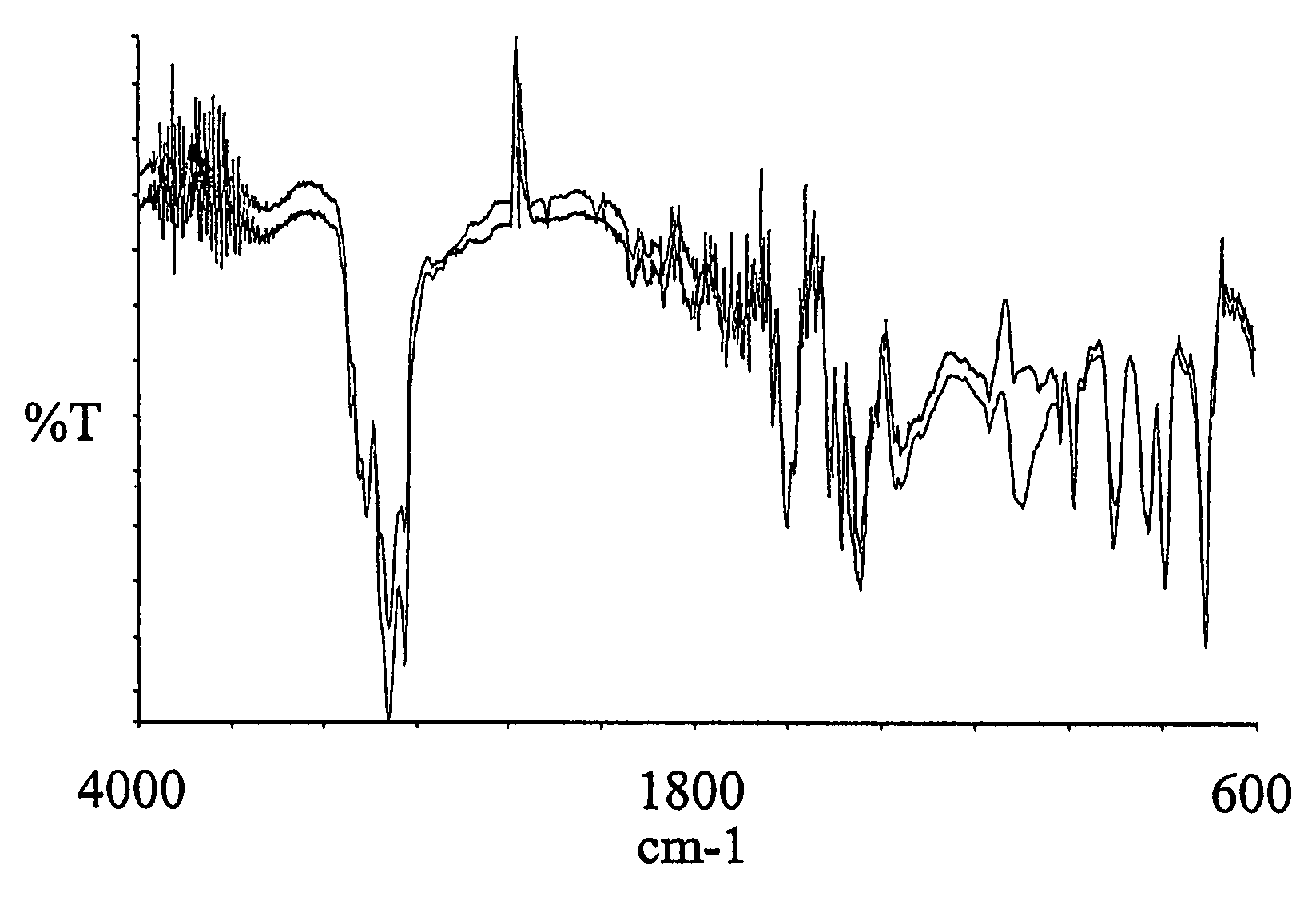Post-modification of a porous support
a technology of porous chromatographic particles and post-modification, which is applied in the separation of components, cation exchangers, pharmaceutical non-active ingredients, etc., can solve the problems of unfavorable micropores in porous chromatographic particles, poor resolution, and complicated process, so as to facilitate such occlusion of pores, increase molecular size, and facilitate selection
- Summary
- Abstract
- Description
- Claims
- Application Information
AI Technical Summary
Benefits of technology
Problems solved by technology
Method used
Image
Examples
example 1
Support Post-modified by Octadecyl Vinyl Ether and Used in RPC
[0068]1.0 gr. 2,2′-azo-bis(2,4-dimethylvaleronitrile (V-65) was dissolved in 2.0 mL toluene and then added to 40.0 mL Octadecyl vinyl ether at 30° C. 4.oo gr. of a macroporous DVB resin with remaining vinyl groups accessible for radical polymerisation were soaked in the monomer / initiator solution. The reaction mixture was gently stirred with a mechanical stirrer at 70° C for 15 hours. After complete reaction excess monomer, oligomers and polymers not covalently coupled to the resin were removed by a washing procedure using hexane as solvent 4.75 gr. Octadecyl vinyl ether modified resin was obtained yielding an increase in mass of 19%. As shown in the IR spectra (FIG. 1) nearly all of the remaining vinyl groups were consumed (985 cm−1) and a significant amount of the octadeceyl vinyl ether has been incorporated (1096 cm−1) into the macroporous DVB resin. Furthermore, the positive effect of grafting octadecyl vinyl ether fr...
example 2
Preparation of Ion Exchanger from a Support Post-modified by Hydroxbutyl Vinyl Ether
[0069]1.0 gr. 2,2′-azo-bis(2,4-dimethylvaleronitile (V-65) was dissolved in 40.0 mL Hydroxybutyl vinyl ether. 4.oo gr. of a macroporous DVB resin with remaining vinyl groups accessible for radical polymerisation were soaked in the monomer / initiator solution. The reaction mire was gently stirred with a mechanical stirrer at 70° C for 15 hours. After complete reaction excess monomer, oligomers and polymers not covalently coupled to the resin were removed by a washing procedure using methanol as solvent. 4.94 gr. Hydroxybutyl vinyl ether modified resin was obtained yielding an increase in mass of 24%. As shown in the IR spectra (FIG. 3) nearly all of the remaining vinyl groups were consumed (985 cm−1) and a significant amount of the Hydroxybutyl vinyl ether has been incorporated (1096 and 3400 cm−1) into the macroporous DVB resin. 10 mL 5 M NaOH was allowed to react with 2.0 gr. of the Hydroxybutyl viny...
example 3
Support Post-modified with Styrene for Use in RPC
[0070]1.0 gr. 2,2′-azo-bis(2,4-dimethylvaleronitrile (V-65) was dissolved in a solution of 24.0 mL Styrene and 16 mL Toluene. 4.oo gr. of a macroporous DVB resin with remaining vinyl groups accessible for radical polymerisation were soaked in the monomer / initiator solution. The reaction mixture was gently stirred with a mechanical stirrer at 70° C. for 15 hours. After complete reaction excess monomer, oligomers and polymers not covalently coupled to the resin were removed by a washing procedure using dichloromethane as solvent. 4.90 gr. styrene modified resin was obtained yielding an increase in mass of 23%. In FIG. 4, the effect of grafting polystyrene from a macroporous DVB resin is shown for the separation of four peptides by RPC as described in example 1.
PUM
| Property | Measurement | Unit |
|---|---|---|
| diameter | aaaaa | aaaaa |
| diameter | aaaaa | aaaaa |
| diameter | aaaaa | aaaaa |
Abstract
Description
Claims
Application Information
 Login to View More
Login to View More - R&D
- Intellectual Property
- Life Sciences
- Materials
- Tech Scout
- Unparalleled Data Quality
- Higher Quality Content
- 60% Fewer Hallucinations
Browse by: Latest US Patents, China's latest patents, Technical Efficacy Thesaurus, Application Domain, Technology Topic, Popular Technical Reports.
© 2025 PatSnap. All rights reserved.Legal|Privacy policy|Modern Slavery Act Transparency Statement|Sitemap|About US| Contact US: help@patsnap.com



